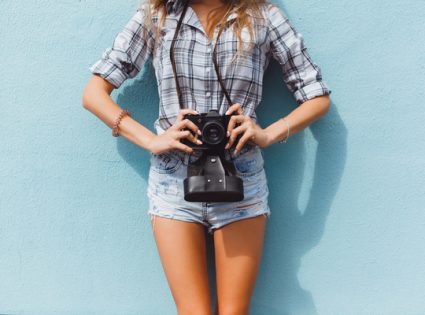A Guide on How to Choose the Best Camera for your Travels
By Lloyd C | Updated December 1st, 2011

A camera is meant to capture special moments and preserve those memories in time. It is a vital piece of kit for travelers. You’ll be able to look back at all those pictures decades from now and remember every place. Each moment and every person with a vivid memory. So, it is better to have the best camera to capture every moment.
However, choosing the right camera for traveling is a little like trying to find a needle in a haystack. There are so many cameras to choose from, by brand, type, power, and size, that unless you’re a professional photographer, you’ll need a little help narrowing down your selection.
So here is a brief, no-frills guide to the best camera to choose for your travels. For a full range of camera options and more detailed information check out Currys online.
To DSLR or not to DSLR, that is the question
The main choice you are faced with is choosing between a standard compact camera and a DSLR, i.e. a digital single lens reflex camera. DSLRs are more powerful, give you more flexibility and control and the ability to take better images.
You can also attach a huge variety of different lenses, offering different depths of field – this refers to the distance between the nearest and farthest objects in view – and focal lenses – this is basically how far your camera can zoom and is measured in millimeters.
The Case for DSLRs
If you are going on safari, trekking through the rainforest or exploring vast expansive landscapes then a DSLR complete with both a wide-angle lens (e.g. 18-24mm) and a zoom lens (e.g. 70-300mm) is by far your best bet.
You’ll be able to snap that hungry lion on the hunt, or those chimpanzees swinging through the rainforest and freeze them in detail in a crisp, clean image.
Plus with a wide angle, you’ll be able to maximize the amount of landscape you get into one image, perfect for the salt flats in Bolivia or the Australian outback.
But…
DSLRs are expensive, bulky and heavy. Plus to really make the most of them you need a variety of lenses and separate flash etc, and all this paraphernalia just adds even more to the costs of owning a DSLR.
The Case for compacts
However, if you want to travel light, to explore places and meet new people then a compact camera is best for you.
They now come with a wide range of preset settings such as night, snow, landscape, portrait, and sport. Also, with various lighting effects and colors are changed accordingly, so you can get a pretty decent shot every time.
Sometimes DSLR photographers spend so long trying to get the light, contrast etc right that they miss the actual shot.
Furthermore, you can now do really exciting wide-angle landscape shots by panning your compact camera 180°. The camera then puts all the images together itself and voila, you have a panoramic picture.
Compact cameras are cheaper, less hassle and a lot smaller and lighter than DSLRs.
But…
You will have limited zoom capability with a compact as they offer very little optical zoom, i.e. the lens zooming. What they offer is a digital zoom and this can end up becoming pixilated when you develop it and increase it in size.
The Compromise of the Best Camera
The final option is brand new. It’s a cross between digital SLRs and compact cameras. Compact system cameras (CSC) have interchangeable lenses similar to those on DSLRs, but they are smaller in size like compacts and offer a huge amount of preset options.
Power in a small package makes these a great compromise. Click the link to discover some of the hotly tipped models.
The Case for DSLRs
If you are going on safari, trekking through the rainforest or exploring vast expansive landscapes then a DSLR complete with both a wide-angle lens (e.g. 18-24mm) and a zoom lens (e.g. 70-300mm) is by far your best choice.
You’ll be able to snap that hungry lion on the hunt, or those chimpanzees swinging through the rainforest and freeze them in detail in a crisp, clean image.
Plus with a wide angle, you’ll be able to maximize the amount of landscape you get into one image, perfect for the salt flats in Bolivia or the Australian outback.
